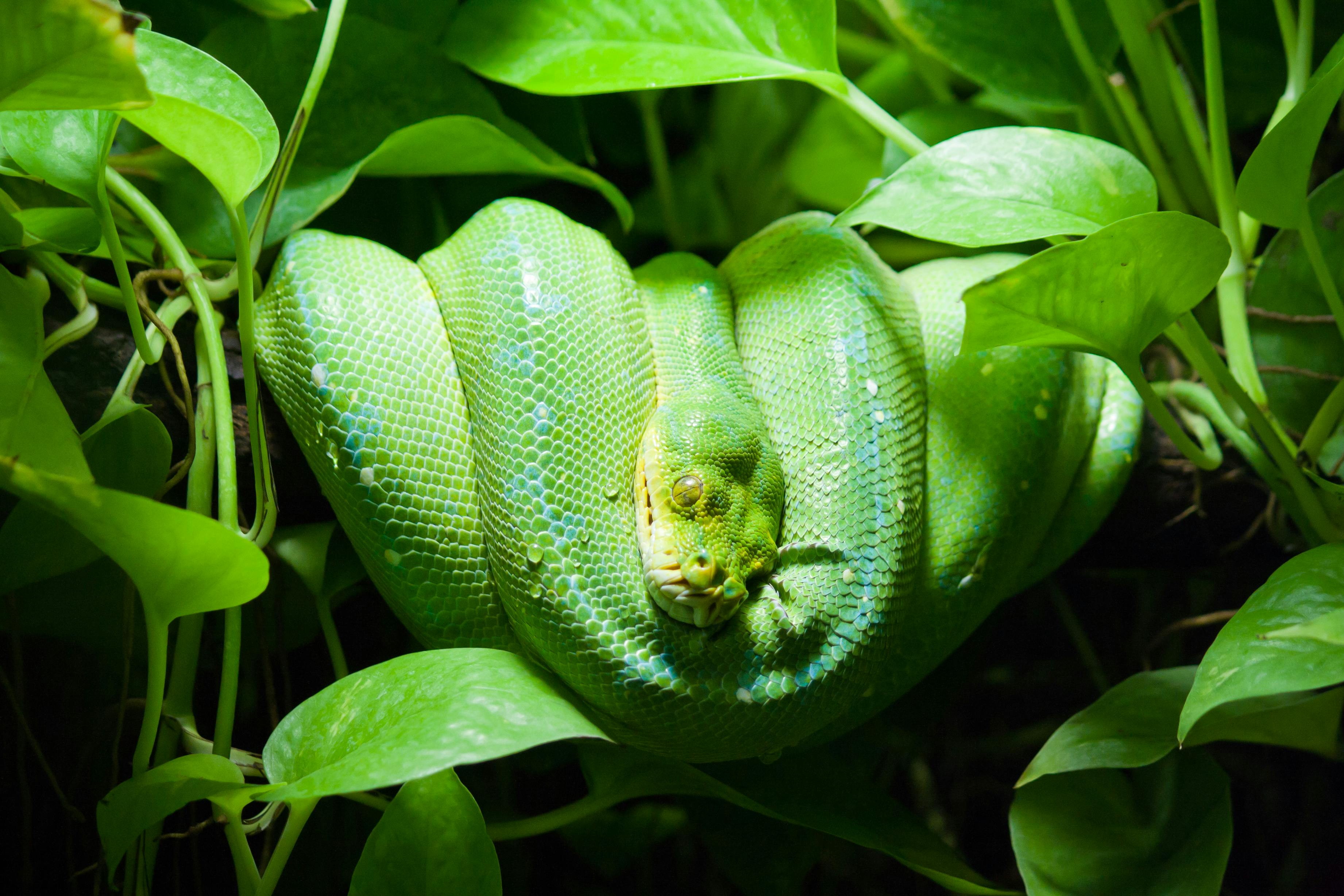Overwatering Linked to Curling Snake Plant Leaves?
Yes, overwatering can be linked to curling snake plant leaves. If the soil is too wet, the roots of the plant will not be able to absorb enough oxygen and will start to die off. This can cause the leaves of the snake plant to curl up as they struggle for air and nutrients. The plant may also become weak and start to wilt. Too much water can also lead to root rot, which can cause leaves to curl up as well. If you notice your snake plant’s leaves starting to curl, it is a good indication that you are overwatering it and should reduce the amount of water you are giving it.
It is important to only water your snake plant when the top inch or two of soil is dry. If you do not have a moisture meter, you can test this by sticking your finger into the soil. If it feels damp, then it doesn’t need any more water yet. You should also avoid using city tap water if possible as this can contain too many minerals for your snake plant’s needs. It is best to use distilled or filtered water for your snake plants.
Snake Plant’s Droopy Leaves
If your snake plant’s leaves have started to droop, it could be a sign that something is wrong with the plant. The most common cause is either underwatering or overwatering. Too much or too little water can lead to drooping leaves. Other potential causes are too much direct sunlight, not enough nutrients in the soil, or a lack of air circulation.
Underwatering
If you think that your snake plant may be underwatering, check the soil for dryness. Stick your finger into the soil about two inches deep and if it feels dry, then it’s time to water your plant. Make sure to only use distilled or rainwater and give it enough water to moisten the whole pot’s soil but do not over-saturate it.
Overwatering
On the other hand, if you think that your snake plant may be overwatered, check for soggy soil or water pooling in the pot’s drainage tray. If either of these is present, allow the soil to dry out before watering again and avoid watering until the soil is completely dry again. Additionally, make sure that there is a way for excess water to escape from the pot so that it doesn’t become oversaturated with moisture.
Direct Sunlight
Another potential cause of drooping leaves is too much direct sunlight on the plant. Snake plants prefer bright light but not direct sunlight as this can burn their leaves and cause them to droop. Move your snake plant away from any windowsills or other sources of direct sunlight in order to prevent this from happening.
Nutrients
If your snake plant’s leaves are drooping due to lack of nutrients in the soil, try repotting them into fresh potting mix with some organic fertilizer mixed in. This should help provide them with all of the nutrients they need and help prevent their leaves from drooping again in future.
Air Circulation
Finally, inadequate air circulation can also lead to drooping leaves on snake plants. Make sure that you keep them away from any drafts or vents and allow plenty of space around them for air circulation purposes. You may also want to consider investing in an oscillating fan which can help ensure adequate air circulation around your plants even when you’re not home to manually move them around yourself every day!
Could Too Much Sunlight Cause Curling in My Snake Plant?
Snake Plants, also known as Mother-in-Law’s Tongue, are known for their ability to tolerate a wide variety of growing conditions. While they prefer bright, indirect sunlight, too much light can cause the leaves to curl or turn yellow. If your snake plant is getting too much sunlight, the leaves will start to curl and may even turn yellow.
The amount of light your snake plant needs will depend on the variety of plant you have. Varieties with lighter green stripes on their leaves need more light than those with darker green stripes. Varieties with reddish or purple edges need even more light than those with lighter colors. If you are unsure which variety you have, try placing it in an area with bright indirect sunlight and monitor its growth for a few weeks before making any changes.
If your snake plant is getting too much sunlight, you will need to move it to an area with less direct sunlight or provide shade to protect it from the hot rays of the sun. You can do this by using sheer curtains or blinds that allow some light in but filter out the direct rays of the sun. You can also move your snake plant to a shadier spot in your home such as an east-facing window or under a tree or pergola outside.
Caring for your snake plant is essential if you want it to thrive. Make sure it has plenty of indirect sunlight during the day and that it isn’t getting too much direct sun which can cause curling and yellowing of its leaves. Provide adequate amounts of water and fertilizer throughout its growing season and make sure it is protected from extreme temperatures and drafts which can cause damage to its foliage. With proper care, your snake plant should continue to thrive for many years to come!

Underwatering or Overwatering
Snake plants, also known as Sansevieria trifasciata, are considered one of the toughest houseplants to care for. Their hardiness is part of what has made them so popular. However, even these tough plants can suffer from underwatering or overwatering. Underwatering can cause the leaves of a snake plant to become limp and curl inward, while overwatering can cause the leaves to dry out and curl inwards as well. Both scenarios need to be avoided in order to keep your snake plant looking healthy and vibrant.
Temperature Stress
Another common reason why snake plants may start to curl is due to temperature stress. Snake plants prefer temperatures between 65-85 degrees Fahrenheit and should not be exposed to cold drafts or extreme heat. If your snake plant is exposed to temperatures outside of this range, it can cause the leaves to start curling inwards as a sign of stress.
Pests or Disease
Pests and disease can also be a cause of curling leaves in a snake plant. Common pests such as aphids, mealybugs, spider mites, and scale insects can all attack your plant and cause leaf damage that leads to curling leaves. Diseases such as root rot can also lead to leaf curl if left untreated for too long. If you notice any signs of pests or disease on your snake plant, it’s important to take action quickly before the problem gets worse.
Are There Other Reasons Why My Snake Plant is Curling?
Yes, there are other potential reasons why your snake plant may be curling its leaves. For example, if you’ve recently moved it from one location to another it could be adjusting itself by curling its leaves inward until it acclimates itself again in its new environment. Additionally, if you’ve recently fertilized with an improper fertilizer it could also lead to leaf curl as a sign of distress from too much fertilizer burn.
In conclusion, many factors such as underwatering/overwatering, temperature stress, pests/disease and improper fertilization can all lead to leaf curl in a Sansevieria trifasciata (snake plant). It’s important that you identify the root cause quickly so that you can take corrective action before the problem gets worse.
Watering
Snake plants are quite resilient and can go long periods without water. To determine if your snake plant needs more water, check the soil. If the soil is dry to the touch, it’s time to give your snake plant a drink. Stick your finger into the soil about an inch or two down; if it’s dry there, then you should water your plant. Be careful not to overwater as this can cause root rot, which can be fatal for your snake plant.
Sunlight
Snake plants are able to tolerate low light but will thrive in bright indirect light. If you notice your snake plant is starting to look leggy with long stems and few leaves, it may need more light. Move your snake plant closer to a bright window or even outside in dappled sunlight for a few hours a day during warmer months. You’ll know it’s getting too much light if its leaves start to fade or become yellowed. Move it back from the window and find a spot with more indirect light until it perks back up again.
Root Rot and Overwatering in a Snake Plant
Root rot and overwatering in a snake plant are two very different conditions, each with its own distinct symptoms and treatments. Root rot is caused by a fungal infection that occurs when the soil is too wet for too long, whereas overwatering simply means the plant has been given too much water.
Root rot can be identified by wilting leaves and yellowing of the leaves, along with brown patches or spots on the plant’s stems and roots. The plants may also feel soft to the touch. In extreme cases, the roots may become blackened or mushy due to the fungus that causes root rot. Treatment involves removing affected parts of the plant and treating it with an antifungal product or solution.
Overwatering can cause similar symptoms to root rot but will generally not have any fungal growth present in the soil or on the roots. Symptoms include yellowing or wilting of leaves, as well as leaf discoloration or brown spots on foliage due to lack of oxygen being able to reach them due to excess water in the soil. Overwatering can be treated by allowing the soil to dry out completely before watering again and ensuring adequate drainage is present in your potting mix.
Both root rot and overwatering can cause serious damage to snake plants if left untreated, so it’s important to recognize which condition you’re dealing with so you can take appropriate action quickly.

Conclusion
Snake plants are resilient plants that can tolerate a wide range of conditions. However, if your snake plant is curling, it is likely because it is not receiving the right amount of light, water, or nutrients. Make sure to provide your snake plant with the right environment and conditions in order to ensure its health and vitality. Additionally, make sure to check for signs of pests or disease that could be causing the curling leaves. If all else fails, consult a professional who can provide you with further advice on how to care for your snake plant.
Overall, understanding why your snake plant is curling can help you take the necessary steps to ensure its health and vitality. With proper care and attention, your snake plant will soon recover from any signs of distress and continue to thrive in its environment.

